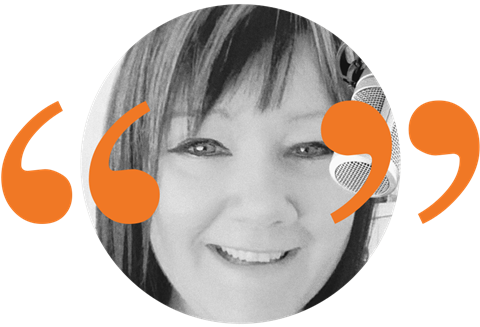As hospital admissions due to eating disorders have risen by 82 percent among children and young people (2021/22), the national children’s charity, Spurgeons, have introduced some resources to tackle harmful eating disorder myths and to help plug the gap as children face extended waiting times for specialised treatment. Premier NexGen spoke with Debbie Pattinson, Senior Counsellor and Digital Counselling Service Lead.

Premier NexGen: Eating disorders and associated challenges have become particularly prominent recently, haven’t they?
Debbie Pattinson: The figures have increased, particularly in the last few years. I think some of that is to do with COVID. If a young person isn’t feeling in control of their life, such as with COVID or lockdowns or a family breakup, they will look to find ways that they can feel in control. And that can be the start of an eating disorder.
PNG: Is there any analysis of what’s causing the anxiety?
DP: It could be a number of reasons. One example is Chris (not his real name). His mum left the family home for a new relationship. Within our counselling together, we looked at how that absolutely tore his world apart. There was no indication this was going to happen.
For him, it was kind of a real grief. And what happened for him was he turned to an eating disorder to find some control in his life, including overexercising and controlling calories. Part of the counselling was helping him to see that this wasn’t his fault. It wasn’t anything he’d done or not done.
He did get referred on to an eating disorder clinic because he needed more professional help. But the counselling did deal with the kind of underlying feelings that he had.
“As a culture…we have this image of the perfect body”
PNG: This is a frightening area for parents. Obviously eating is a very basic daily thing that someone with an eating disorder has to face, early diagnosis is quite important. So is the key how you spot the problem?
DP: I would start answering that question by saying, I think as a culture, and particularly with social media, we have this image of the perfect body. And if we look at males, you know, it can be perfectly toned body. Girls too imagine having a perfect attractive body.
Some of the signs to look out for is a young person starting to refuse certain foods and feeling uncomfortable about eating around others. They keep making excuses, why they’re not going to eat that meal.
They might say: “I ate earlier!” or: “I’ll have something later.” They’re subtle, but it could be they start skipping meals. So a young person might notice their friend has just chucked a sandwich in the bin. If they see this, I would encourage everyone to speak up – it’s not snitching, it’s not telling tales. This could really help their friend if they tell an adult, a teacher, a parent. The earlier an eating disorder is caught, the easier it is to stop it in its tracks. I think once it gets going, habits are formed and it becomes very tough to crack.
Part of what I do in the counselling with Chris was a bit of psychoeducation. We looked at why we need nutrients and the long-term effects the damage that could be done: not to scare them but to educate them in a very subtle way.
PNG: I guess there’s a degree of shame that parents might feel if this was an issue for their child?
DP: I think it’s very easy as parents to blame themselves. But there can be many reasons why this has begun. There is plenty you can do as a parent.
Listen to your child. Say that you’re there for them.
If they’re in counselling, just say that you know it’s private and confidential, but you are there if they want to talk about anything.
I think those three words: “I love you” are so important. I don’t think you can ever say that enough to a child. I sit in a room day after day with children. And I hear from them say: “I think my mom loves me, I think my dad loves me.” You can’t say it enough.
Try not to push that child. You won’t fully understand the issues, work with the professionals and seek all the help that’s out there.
We have developed a toolkit for people to understand more and I would urge parents to access it, even if they don’t think their child has a problem.
There are loads of different websites, and professional help. Seeing your GP is a typical starting point.
PNG: The stats suggest that the male / female split is roughly 25 percent boys to 75 percent girls.
DP: Personally, I believe that figure will be far higher for boys and men. I think there is still a stigma attached to men seeking help. I’ve heard it from young boys aged 13: “My dad tells me to man up.” I am seeing an increase in boys coming for help.
PNG: What are the next steps for those reading this?
DP: We’ve launched a tool aimed at educating and equipping families and professionals to support young people in their recovery. You can find that here.
You register and will automatically be given access to the page with the video animations and the handbook. You then receive an email with a link to the same page so that it can be bookmarked. You will then receive three further emails with audio from a GP, a counsellor and a parent.




























